Are you looking to create a serene sanctuary in your home? A bedroom infused with Japandi design principles combines the minimalist elegance of Japanese aesthetics with the warmth of Scandinavian simplicity. It’s all about creating a calm, uncluttered space that promotes relaxation and mindfulness. In this article, we’ll dive into seven essential tips for designing a Japandi-style bedroom that envelops you in tranquility.
1. Embrace Natural Materials

Buy Similar Decor in This Article
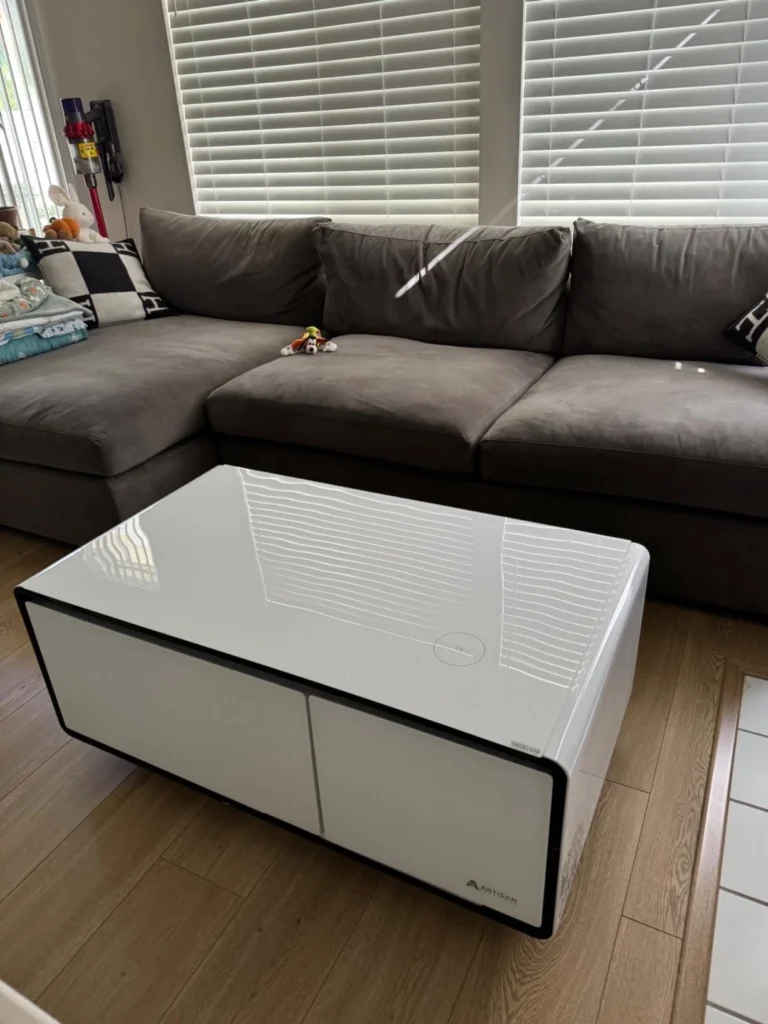

Buy Similar Decor in This Article
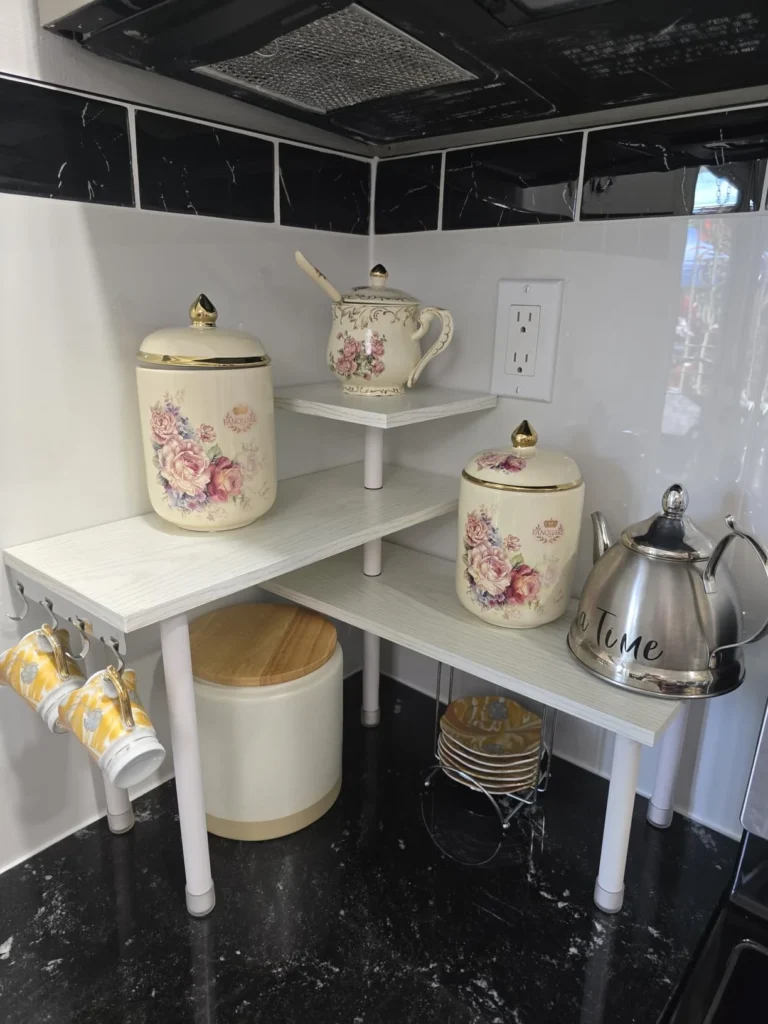

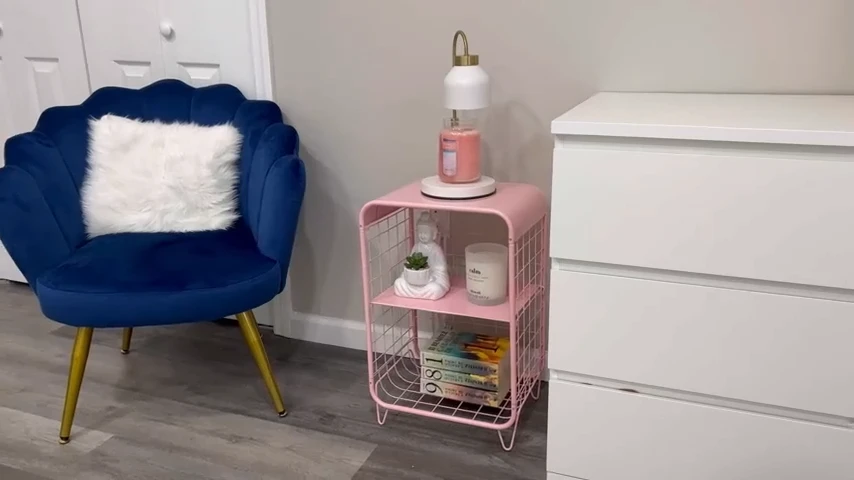



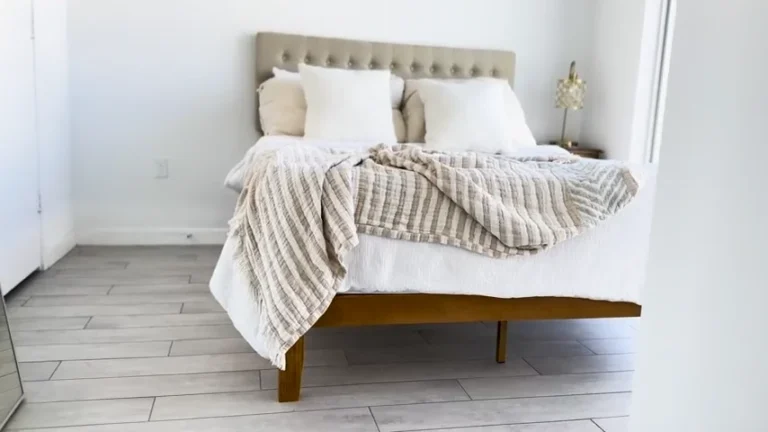













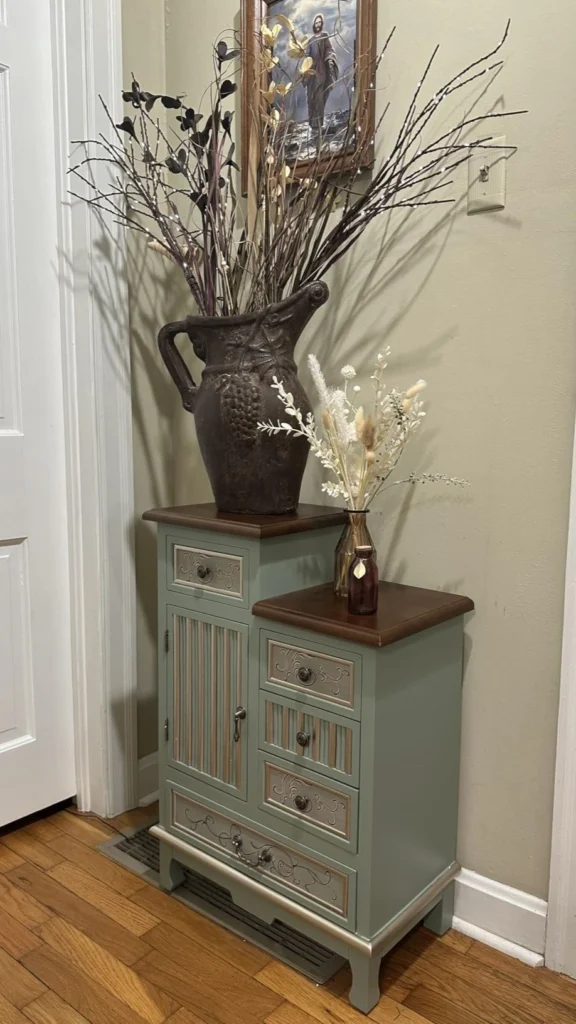





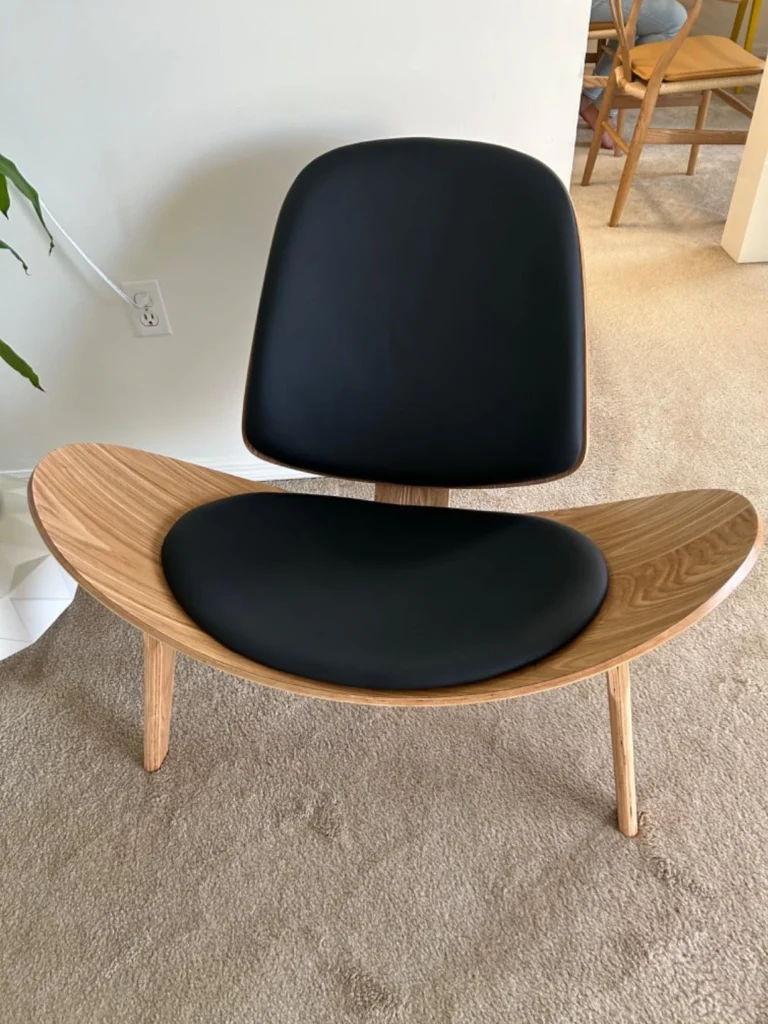

One of the hallmark features of Japandi design is the emphasis on natural materials. Think wood, stone, and linen—elements that bring a sense of calmness and authenticity to your bedroom.
Why It Matters
Natural materials not only look beautiful, but they also fulfill a deeper purpose: they connect you to nature. Incorporating these elements can reduce stress and enhance your overall sense of well-being.
How to Incorporate
- Choose Solid Wood Furniture: Opt for furniture made from oak, walnut, or bamboo, which add warmth and character to your space.
- Add Natural Textiles: Linens, cottons, and wool textiles feel comfortable and grounding. Try a textured wool throw or soft cotton bed linens.
- Use Stone Accents: Consider incorporating stone accessories, like a sculptural side table or decorative objects, to add an organic touch.
2. Stick to a Neutral Color Palette
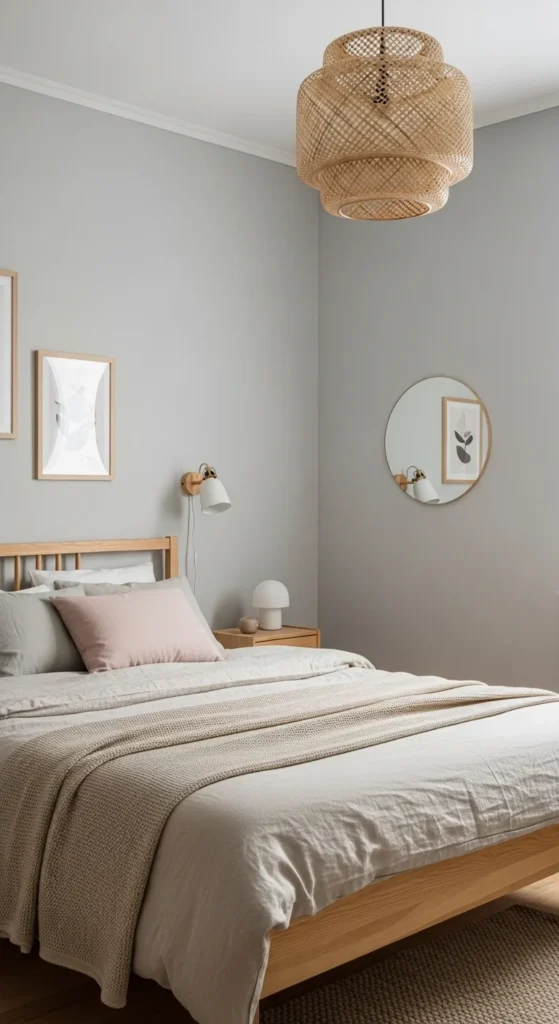
Colors evoke emotions and can significantly impact your mood. A neutral color scheme is a cornerstone of Japandi design, promoting a sense of calm and creating an airy atmosphere.
Why It Matters
A neutral palette helps in creating an expansive feel, making the space appear larger and more open. Shades of beige, soft grays, and muted pastels work beautifully together and maintain a cohesive look.
How to Use Color
- Select Bed Linens Wisely: Opt for soft beiges, warm whites, and gentle grays for your bedding. These colors provide a relaxing backdrop.
- Paint Walls in Soft Tones: If you’re considering a fresh coat of paint, choose soft neutrals or light earth tones to enhance a serene ambiance.
- Incorporate Subtle Accents: Introduce muted colors through cushions or art, ensuring they harmonize with the overall palette without overwhelming it.
3. Prioritize Functional Furniture
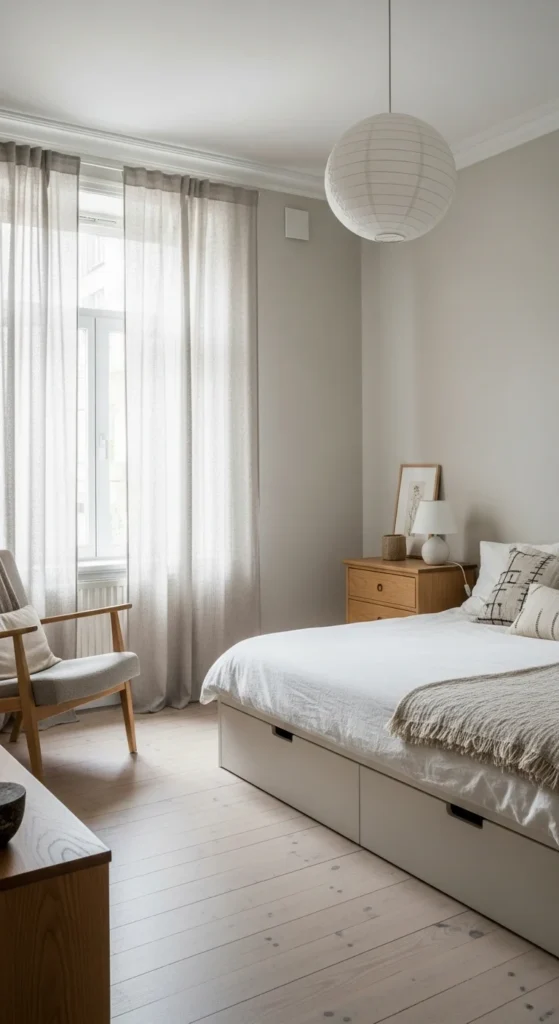
In a Japandi-inspired bedroom, every piece of furniture serves a purpose while embodying minimalist design. The goal is to maintain simplicity without sacrificing comfort or functionality.
Why It Matters
Functional furniture helps reduce clutter, allowing your space to breathe. A thoughtfully arranged room facilitates relaxation, making it a haven for rest.
How to Choose
- Opt for Multi-functional Pieces: Look for beds with built-in storage or nightstands that can serve multiple purposes (like a reading nook).
- Limit Your Furniture Selection: Stick to the essentials—bed, bedside tables, and perhaps a chair—ensuring each piece contributes to a harmonious design.
- Seek Clean Lines: Choose furniture that features clean lines and simple forms, steering clear of overly ornate designs.
4. Let in Natural Light
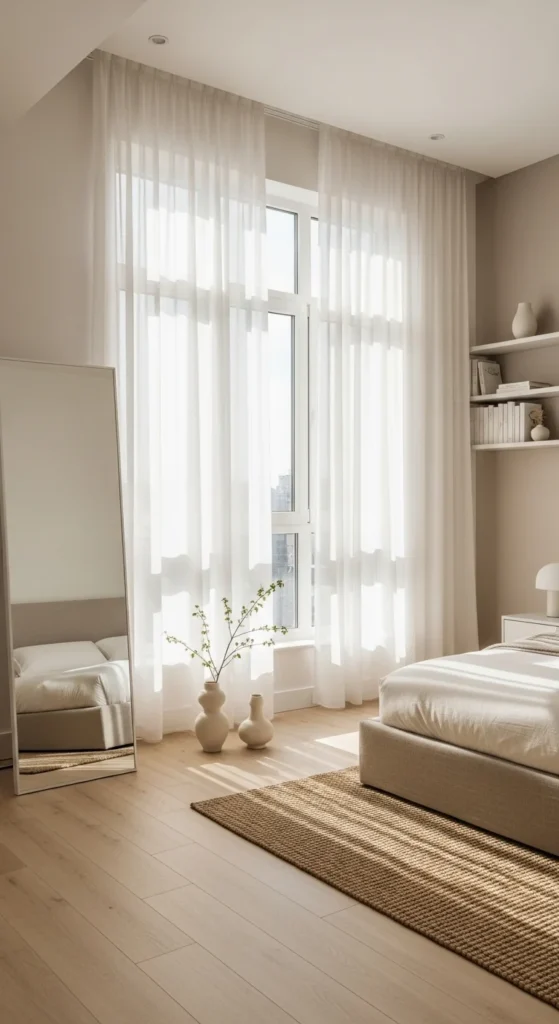
Natural light has significant impacts on mood and well-being, making it crucial in creating your Japandi bedroom. A well-lit space feels more inviting and energizing, enhancing your connection to the outdoors.
Why It Matters
Exposure to natural light aids in regulating your circadian rhythm, providing a better sleep experience and overall mood boost.
How to Maximize Light
- Use Sheer Curtains: Opt for light, airy curtains that filter light rather than block it entirely, maintaining privacy while brightening up your room.
- Consider Minimalistic Window Treatments: If privacy allows, consider eliminating heavy drapes for streamlined blinds or simply leaving windows bare.
- Strategically Place Mirrors: Utilize mirrors to reflect light around the room, which can make a small space appear larger and more open.
5. Invest in Quality Bedding

A good night’s sleep starts with quality bedding. Embracing the Japandi philosophy means prioritizing comfort and minimalism in your choice of bedding.
Why It Matters
High-quality bedding enhances your sleeping experience and contributes to the overall aesthetic of your bedroom.
How to Choose Bedding
- Texture is Key: Select bedding made from organic cotton or linen for their breathability and luxurious feel.
- Layer Wisely: Use a combination of textures to create depth—pair smooth sheets with a chunky knit throw or a soft down comforter.
- Maintain a Unified Aesthetic: Keep patterns subtle and colors in line with your neutral palette for a tranquil look.
6. Incorporate Plants for a Breath of Fresh Air
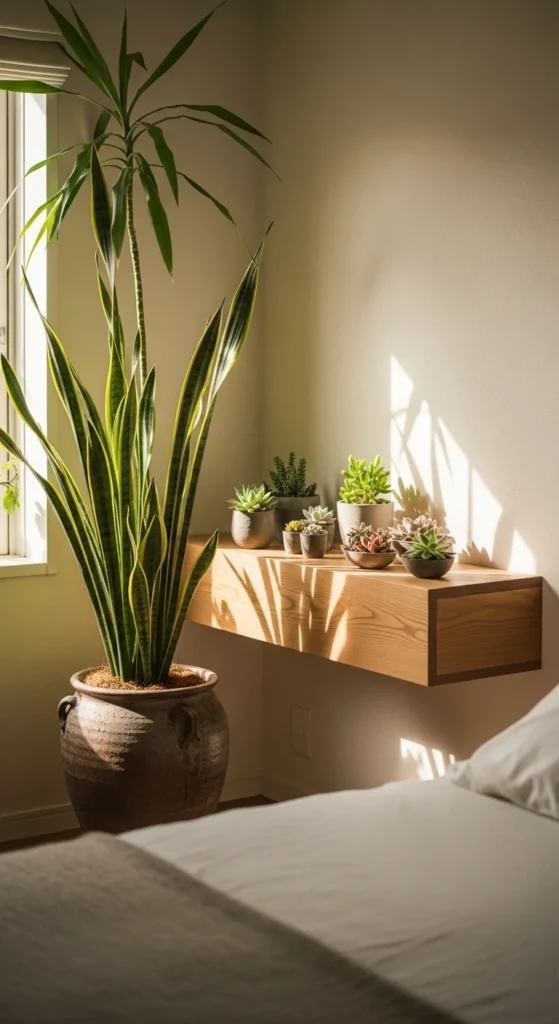
Plants are a vital part of Japandi design, bringing life to your bedroom and enhancing the overall atmosphere.
Why It Matters
Not only do plants improve air quality, but they also add a pop of life and color to your space, encouraging a calming effect through their presence.
How to Bring in Nature
- Select Low-Maintenance Indoor Plants: Consider options like snake plants, peace lilies, or succulents that thrive indoors with minimal care.
- Display Thoughtfully: Use simple, natural pots to keep the focus on the plants, and position them for optimal light—perhaps a hanging planter by the window.
- Create a Focal Point: Position a prominent plant in a corner to draw the eye and create a natural focal point in the room.
7. Keep Clutter at Bay
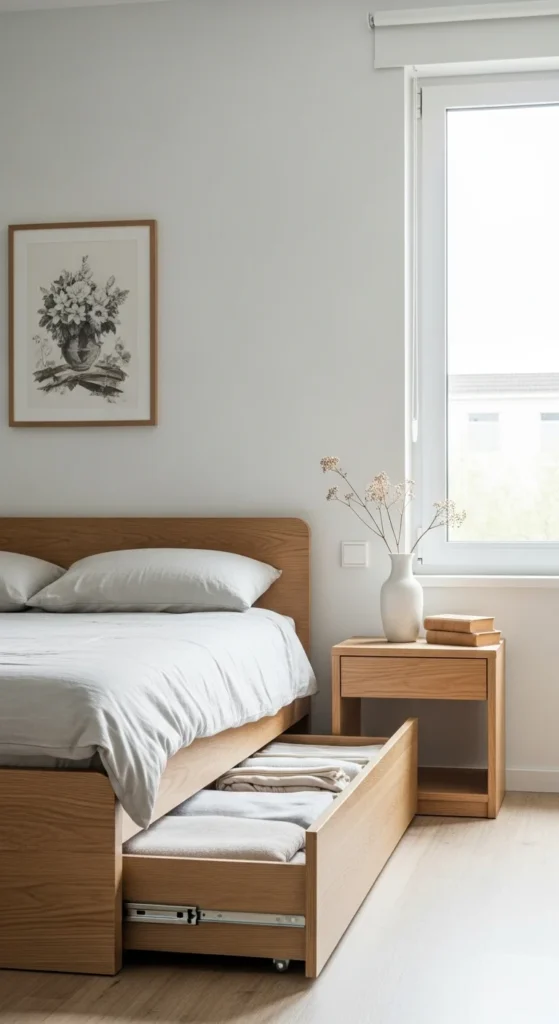
Clutter can impede the calm environment you strive to create. In a Japandi bedroom, simplicity is cherished, so maintaining a decluttered space is essential.
Why It Matters
A clutter-free environment can improve your mental clarity and decrease stress, setting the stage for better relaxation and sleep.
How to Maintain Order
- Implement Smart Storage Solutions: Utilize under-bed storage or built-in cabinets to hide away items that don’t belong in plain view.
- Regularly Reassess Your Belongings: Make it a habit to periodically evaluate your room for unnecessary items and remove them regularly.
- Adopt Minimal Décor: Choose decorative accents wisely. Limit items to a few meaningful pieces that contribute to the aesthetic and spirit of the space.
By following these seven Japandi bedroom design tips, you can create a minimalist and calm sanctuary that prioritizes tranquility and style. Incorporating natural materials, neutral colors, and functional furniture alongside thoughtful plant choices promotes a sense of zen within your space.

Get Our Free Design Guide!
Transform your space with our exclusive interior design ebook. Enter your email to download instantly.
Take your time with each element, allowing your bedroom to evolve into a calming retreat. Remember, the key to Japandi design is simplicity, and with each small change, you’re one step closer to achieving that perfect balance of peace and style in your bedroom oasis.
Now, it’s your turn to embrace the art of Japandi in your own space. Create the harmony, simplicity, and serenity your bedroom deserves. Happy decorating!
